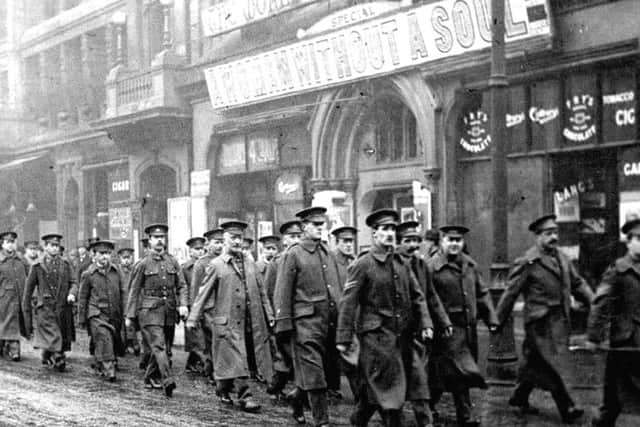Makeshift cinemas at the front a vital distraction
and live on Freeview channel 276
There were double the number of military cinemas on the Western Front than previously thought and the extent of film-watching by troops during 1914 to 1918 has previously been overlooked by historians.
The makeshift cinemas, in abandoned town halls, barns, purpose-built huts or simply in the open air, were often only a few miles behind the trenches.
Advertisement
Hide AdAdvertisement
Hide AdSoldiers were assigned roles as projectionists or to secure the latest releases from film distributors back home, and often managed to put on screenings three times a day despite having to work in basic conditions with equipment prone to failure. The study is a result of years of analysis of documentation and diaries by researcher Chris Grosvenor, from the University of Exeter.


“For soldiers the cinema was not a disposable or arbitrary way to spend their free time, but a much needed psychological respite from the immediate dangers of trench warfare: a cathartic, morale-boosting release from the ever-present, impending aura of doom that permeated life on the front lines,” he said.
Soldiers were most interested in watching slapstick comedies starring early icons like Charlie Chaplin, but other genres and types of films made their way to the front.
They were frequently dismissive of topical fiction or documentary films depicting the war itself, such as the famous documentary The Battle Of The Somme.
Advertisement
Hide AdAdvertisement
Hide Ad“Soldiers often approached these types of films with caution, mocking the overly sentimentalised, censored, or even staged scenes which could never compare to the reality of what soldiers experienced on a day-to-day basis,” he said.
“Soldiers could be silent and rapt during the beginning of films, and during love scenes.
“But they would boo and hiss if they saw a villain, and cheer for a happy ending.
Mr Grosvenor added: “It is my hope that my research has gone some way towards bridging the gap between cinema audiences of today, and cinema audiences of a century ago, particularly at a moment like this in 2018 with the centenary commemorations for the end of the war in November 1918.”